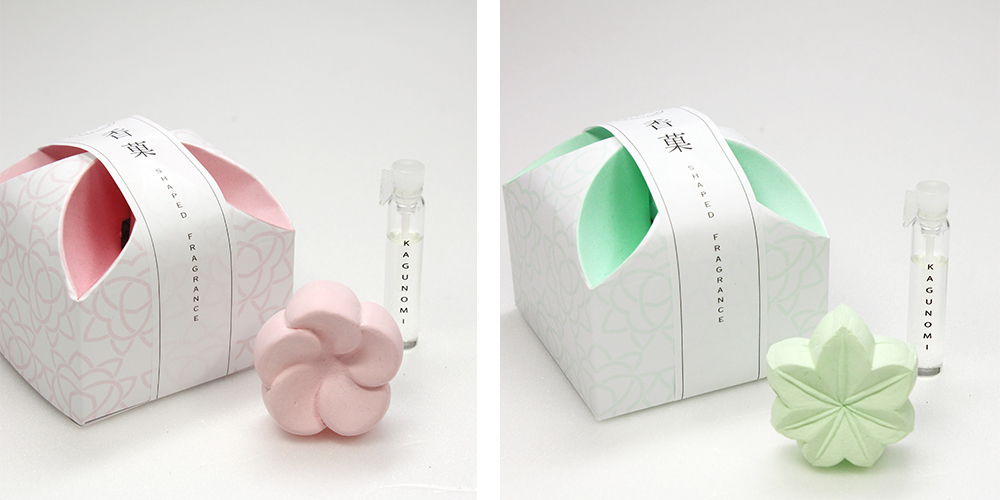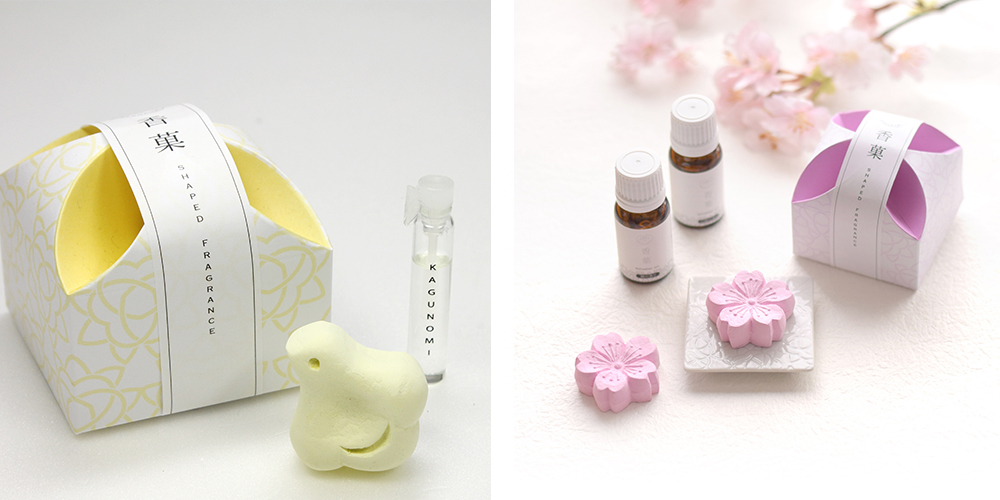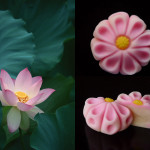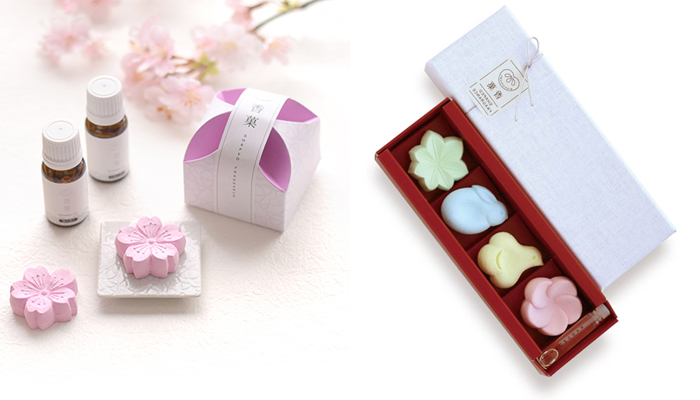
In Japanese cuisine, there are two distinct kinds of sweets: Western-influenced desserts such as cakes, cookies, and breads, and wagashi (和菓子), or traditional Japanese confectionery. Incense manufacturer Nippon Kodo found inspiration in wagashi for a unique set of fragrance diffusers they call ‘Kagunomi.’ The word ‘kagunomi’ itself has interesting roots in ancient Japanese folklore, specifically a story involving sweets.
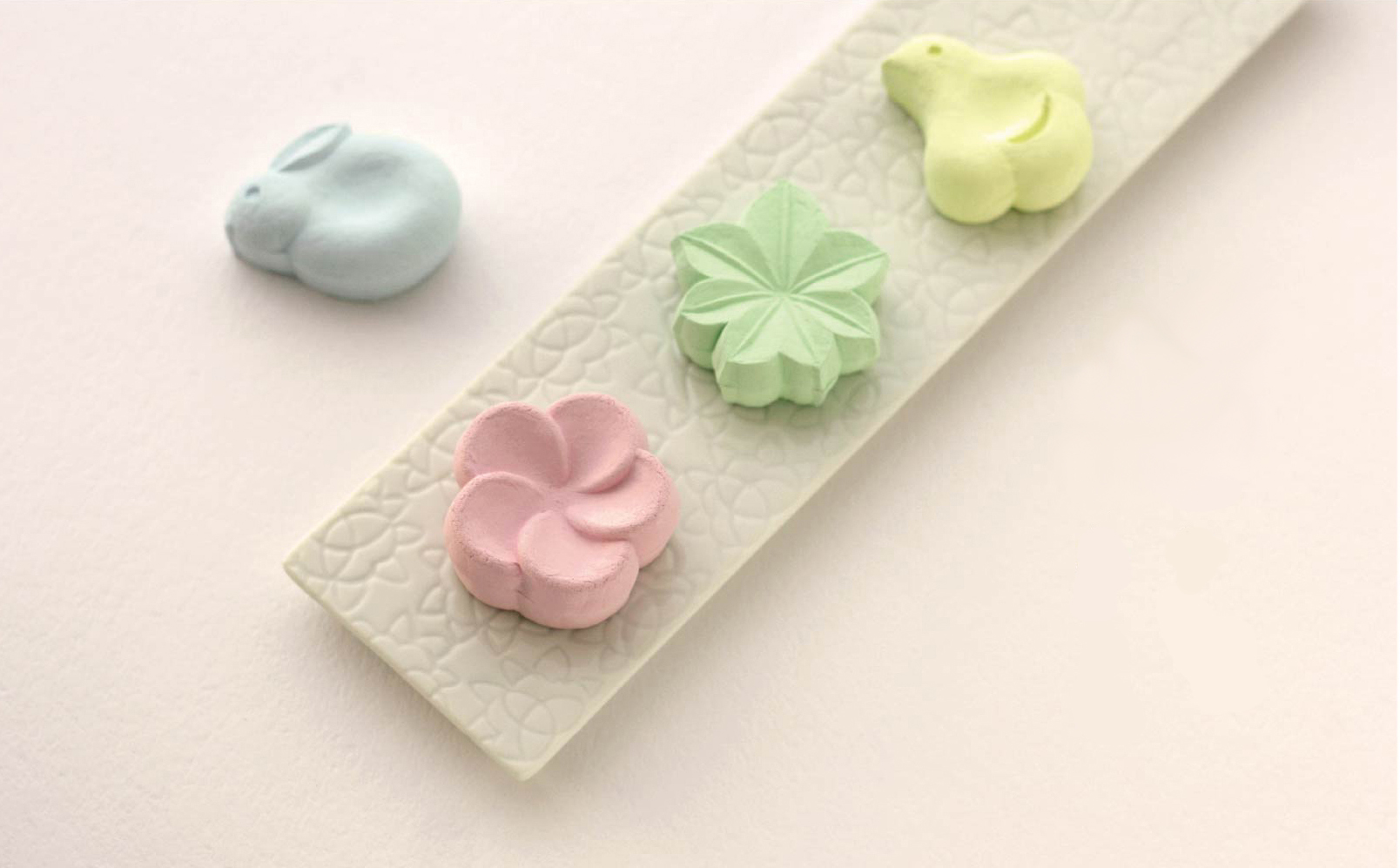
Kagunomi diffusers come in five shapes meant to represent auspicious, natural figures in traditional Japanese culture: a blue rabbit, a pink plum blossom, a green Japanese maple, a yellow chidori bird, and a purple cherry blossom.
Nippon Kodo cleverly blends the traditional manufacturing processes of incense and wagashi to create bite-sized diffusers ideally suited for small spaces such as one’s bedside or workspace. Simply place a few drops of the included fragrance oil onto the diffuser to release the aroma of tachibana citrus.
The Kagunomi diffusers resemble a particular kind of wagashi called rakugan (落雁) made from sugar and soybean flour that is pressed into different shapes using wooden molds. Similar wooden molds are used to make the Kagunomi fragrance diffusers.
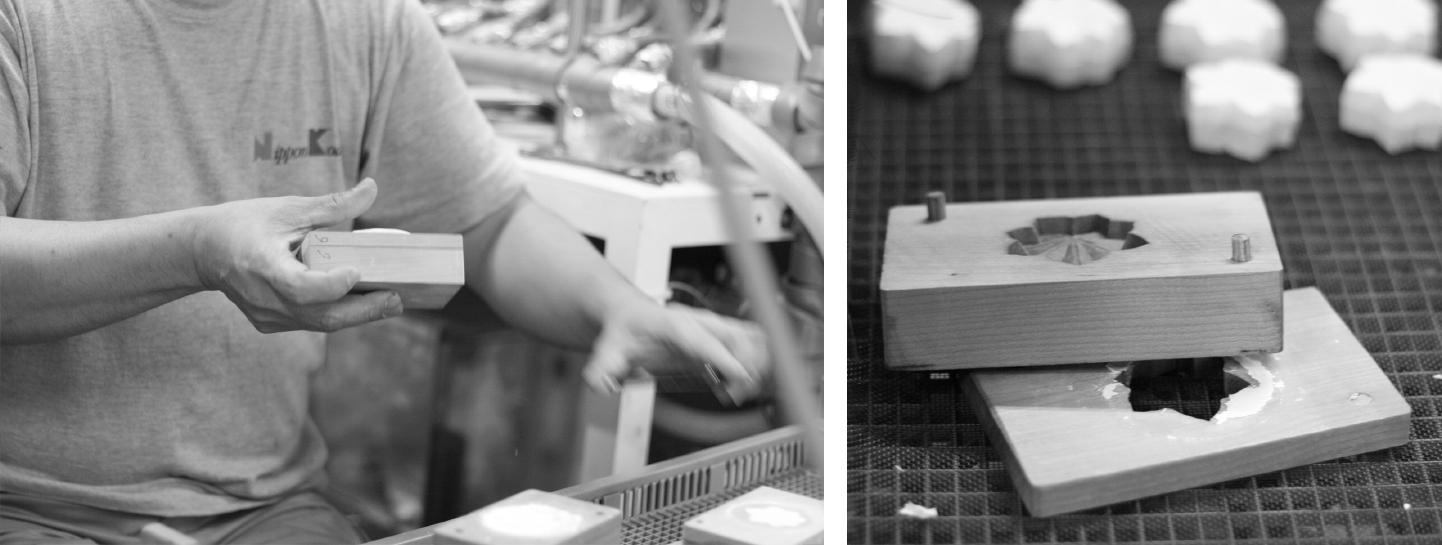
Fragrance diffusers being made by hand with wooden molds typically used in wagashi-making
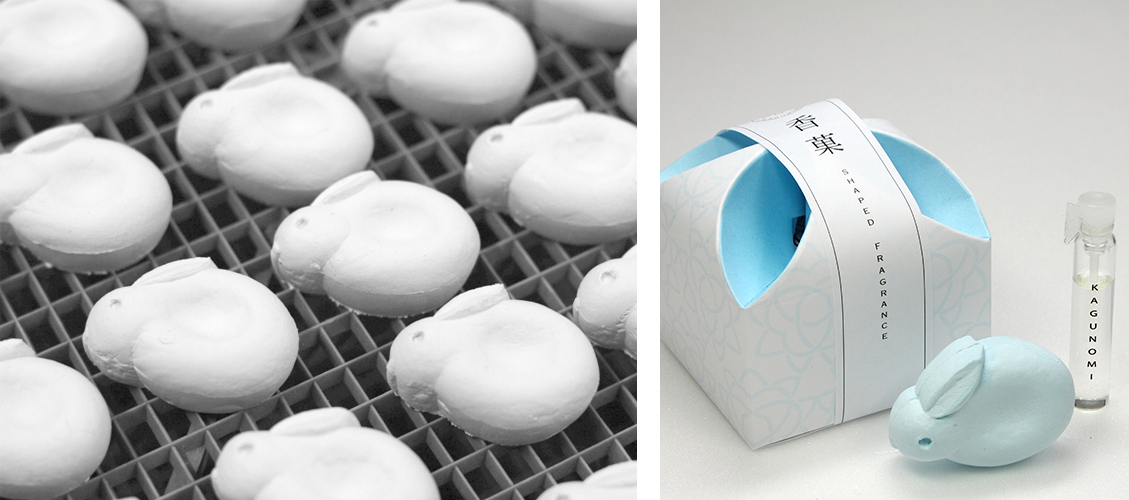
‘Kagunomi’ is a word taken from one of the stories of the Nihon Shoki, a record of classical Japanese history written in the 8th century. In the story, a man named Tajimamori is instructed by Emperor Suinin, the 11th emperor of Japan, to travel to the mythical land of Tokoyo no Kuni and retrieve for him a magical fruit said to provide immortality and eternal youth. The name of this fruit was tokijiku no kagu no konomi (非時香菓) and is widely believed to be a tachibana, a type of citrus native to Japan. The tachibana is called 1年中香りを放つ木の実, ichi nenjuu kaori o hanatsu kinomi — the “fruit that remains fragrant year-round” — and is a symbol of eternity because of its supposed origins in the Nihon Shoki. Each Kagunomi diffuser comes packaged with a small vial of tachibana fragrance oil.
Fun fact: the man tasked with finding this magical fruit, Tajimamori, is worshipped as the god of sweets by people in the confectionery industry in Japan. 